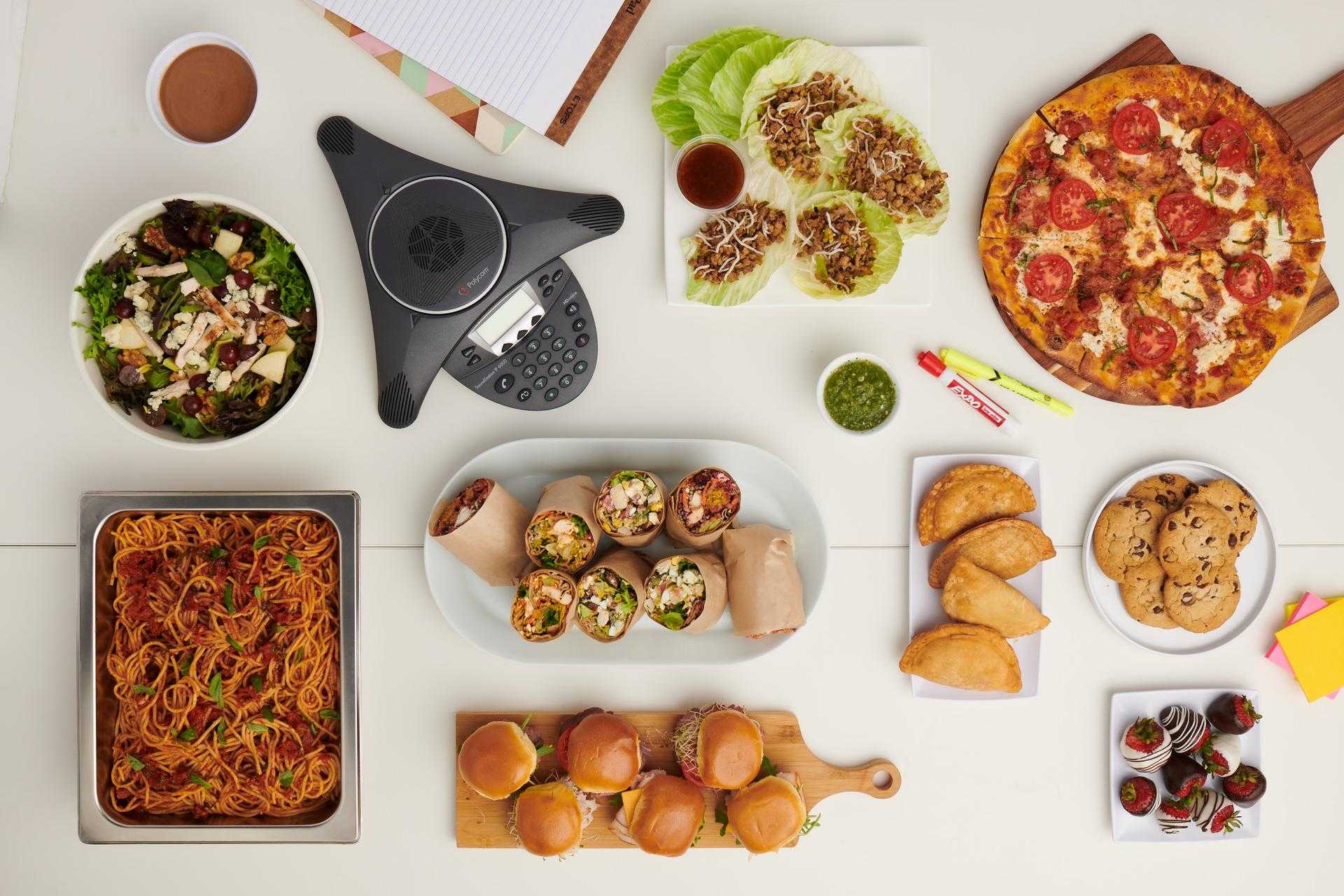Lunch meetings are popular across a range of industries; they enable attendees to accomplish professional goals in a casual setting.
Hosting these events is both an art and a science—you should ensure employees and clients feel productive and comfortable. Whether you’re taking clients out to lunch or planning food for the leadership team, use these tips to learn how to host a business lunch.
Do: Manage time wisely
Chances are, your employees and clients will be busy both before and after your business lunch. Respect their time by creating a schedule, so they know what to expect. In general, it’s best to:
- Restrict lunches to an hour and a half or less.
- Communicate start and end times clearly.
- Write an agenda or a list of topics to cover.
- Start and finish on time.
Conversation naturally tends to wander when you’re sharing a meal. When you notice the group getting off track, gently steer the topic back to business.
Don’t: Select an inconvenient location
Research your location options in advance. Is the restaurant central for all attendees? Will they be able to find free parking quickly? How is afternoon traffic? Is the restaurant clearly marked and easy to access from a main road?
If you answer “no” to any of these questions, it may be time to select a different spot. When your employees and clients spend less time and energy on logistics, they will be better able to focus on the business at hand. Plus, they won’t have to cut the lunch short to beat the traffic.
When hosting a business lunch for employees, consider ordering food to the office rather than going out. You’ll reduce stress, cut transit time, and give the team more time to relax.
Do: Consider dietary limitations
About 25% of Americans are gluten-free, 30 million are lactose-intolerant, and 4% are vegetarian.
So, there’s a good chance some of your business lunch guests have allergies, intolerances, or nutrition goals. Whether you’re visiting a restaurant or planning a catering menu, it’s important to have options for everyone.
Asking about dietary restrictions can feel invasive, particularly when you’re hosting new clients or important executives. If you don’t feel comfortable doing so, you can accommodate them by:
- Choosing a restaurant with a varied menu
- Sending out a link to the online menu and asking for feedback
- Enabling each attendee to order delivery from the restaurant of their choice
Don’t: Forget about employees’ and clients’ needs
Try to anticipate their needs. If you’re dining at a restaurant, send out a list of convenient parking lots in advance. For in-office events, remember to stock up on utensils, napkins, condiments, cups, plates, and beverages.
Think about the purpose of the meal. If you’re planning to brainstorm ideas for a new project, for example, keep paper, pencils, and fresh whiteboard markers on hand. You might also choose foods that don’t require much attention — you can eat a sandwich while concentrating on a task, but spaghetti requires more focus.
Is your meal part of a larger event? Research attendees’ plans before and after lunch and take them into consideration. If the team is going into a formal contract negotiation after eating, help them stay neat and professional by choosing mess-free foods and keeping a stain stick on hand for emergencies.
Do: Simplify lunch with Grubhub Corporate
With catering and group order options, delight your employees and clients with a variety of local favorites, while easily controlling costs, all in one place with your Grubhub Corporate Account. From business lunches to everyday meals, we simplify food ordering so you worry less about ordering and can focus on important business tasks.
To discover the different ways to order and how you can control costs with our platform, learn more about Grubhub Corporate Accounts.
Don’t: Leave ambiguity regarding payment
Make sure your employees and clients know you’re paying for the business lunch — it’s a good way to ward off confusion or discomfort.
If you’re ordering in, invite everyone to contribute to a group order on the company’s dime. Dining out? Mention to the server that you’ll need a single check, and discreetly drop off a credit card with the server before the meal ends. That way, attendees don’t feel pressure to reach for the bill.
Do: Set the tone for the meal
As the host, guests will take their cues from you. Make their lives easier by anticipating and addressing common questions.
Encourage casual conversation before the food arrives by choosing an informal topic — and when it’s time to get down to business, make a clear transition. By taking control, you help the group navigate gracefully.
As you gear up to host your next business lunch, keep these tips in mind. If you’re interested in learning more about streamlining the food ordering process with Grubhub Corporate Accounts, contact us today.





